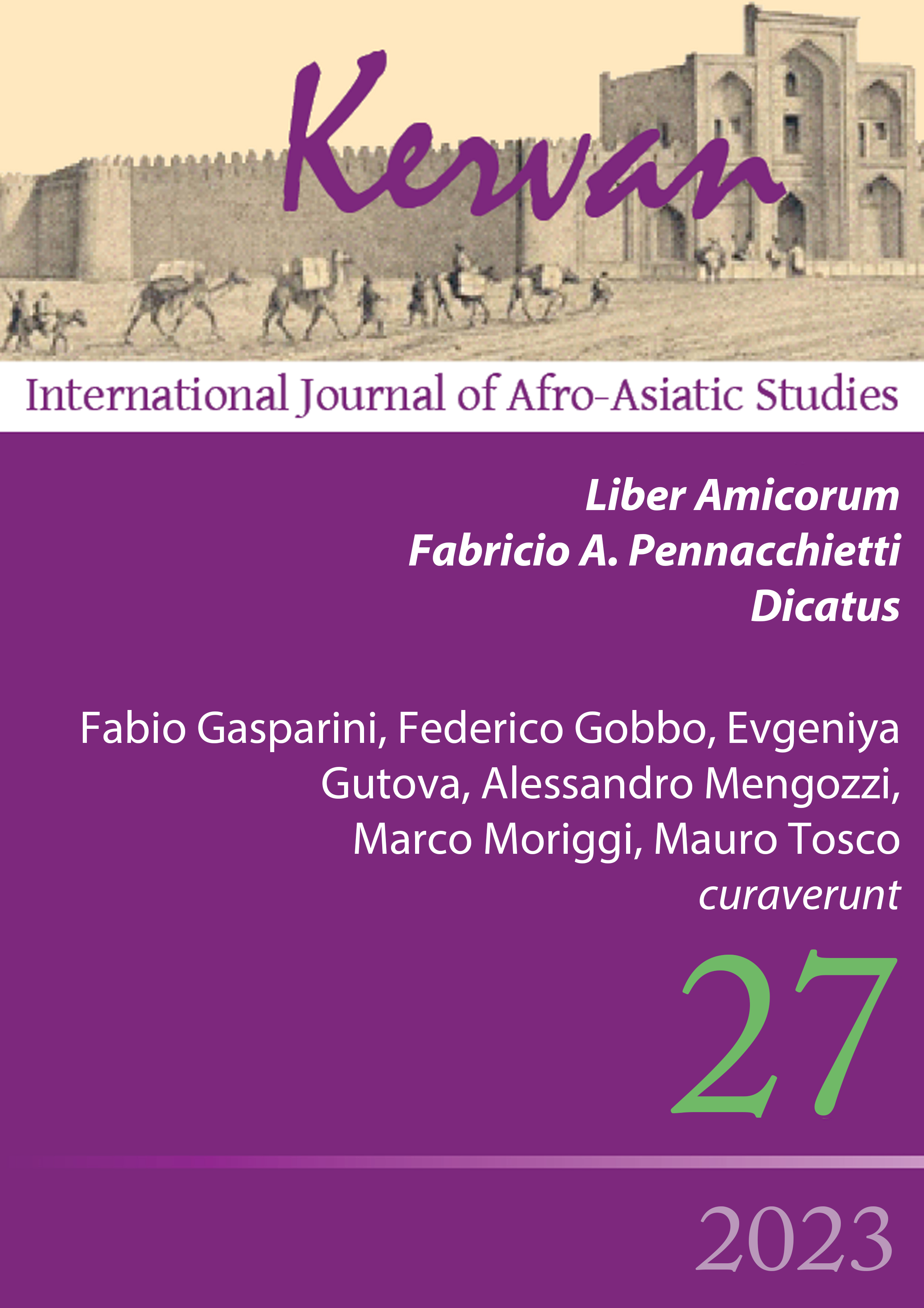Oni studu pli profunde la arabajn pruntojn en la moderna okcidenta aramea
DOI:
https://doi.org/10.13135/1825-263X/8227Abstract
Modern Western Aramaic is presently spoken in two villages in the Syrian Arab Republic, as well as a small but growing diaspora. All its speakers are bilingual in Arabic, and its phonology, morphology, syntax, and lexicon bear the hallmarks of this longstanding contact situation. These characteristics distinguish Modern Western Aramaic from all other surviving Aramaic languages, most of which evolved to their present forms in a similarly bilingual situation with Iranian languages such as Kurdish and Persian. Scholars have characterized these hallmarks as “corrupt,” “deep,” and even so numerous as to be “pointless to list,” but the degree of their influence has never truly been quantified. While no scholar has yet understated the degree of Arabic influence upon Modern Western Aramaic, evidence suggests that prior scholarship may have overstated it.
Downloads
Downloads
Published
Issue
Section
License
Gli autori che pubblicano su Kervan accettano le seguenti condizioni:
- Gli autori mantengono i diritti sulla loro opera e cedono alla rivista il diritto di prima pubblicazione dell'opera, contemporaneamente licenziata sotto una Licenza Creative Commons - Attribuzione che permette ad altri di condividere l'opera indicando la paternità intellettuale e la prima pubblicazione su questa rivista.
- Gli autori possono aderire ad altri accordi di licenza non esclusiva per la distribuzione della versione dell'opera pubblicata (es. depositarla in un archivio istituzionale o pubblicarla in una monografia), a patto di indicare che la prima pubblicazione è avvenuta su questa rivista.


 The articles that have appeared on Kervan since 2016 are rated as Class A in the system of National Scientific Qualification (ASN, disciplines 10/N1 and 10/N3).
The articles that have appeared on Kervan since 2016 are rated as Class A in the system of National Scientific Qualification (ASN, disciplines 10/N1 and 10/N3). The journal has been approved for inclusion in DOAJ. The DOAJ listing of the journal is available at
The journal has been approved for inclusion in DOAJ. The DOAJ listing of the journal is available at  The journal has been approved for inclusion in ERIH PLUS. The ERIH PLUS listing of the journal is available at
The journal has been approved for inclusion in ERIH PLUS. The ERIH PLUS listing of the journal is available at  Kervan was just accepted for indexing in SCOPUS. This important milestone ensures that articles published in Kervan are easily found when searching for library, archives and Information science and it enables Kervan authors to keep track of how often their article has been cited by others.
Kervan was just accepted for indexing in SCOPUS. This important milestone ensures that articles published in Kervan are easily found when searching for library, archives and Information science and it enables Kervan authors to keep track of how often their article has been cited by others.

